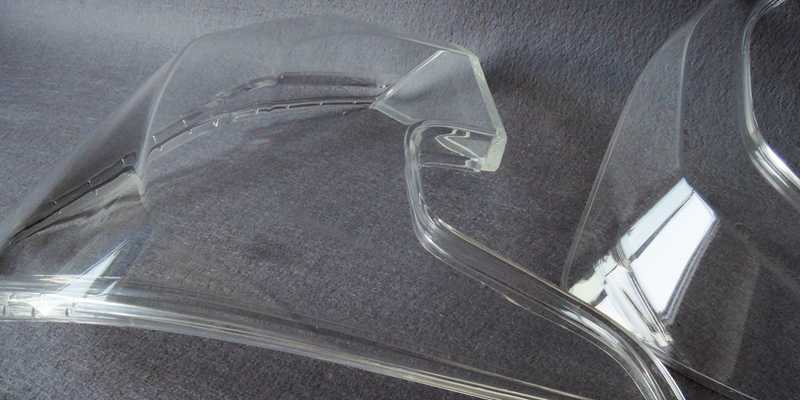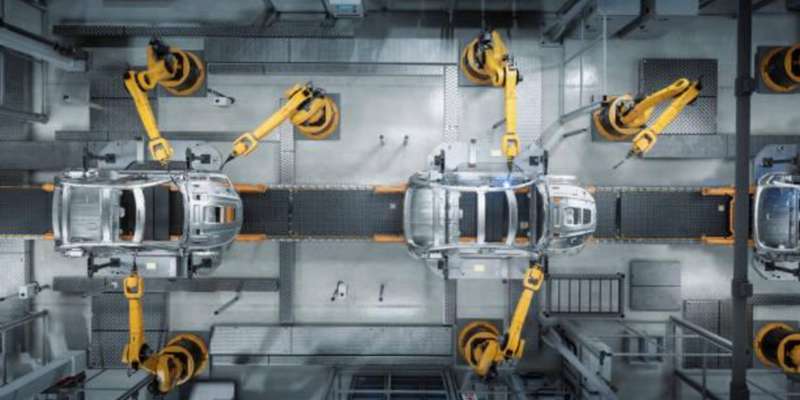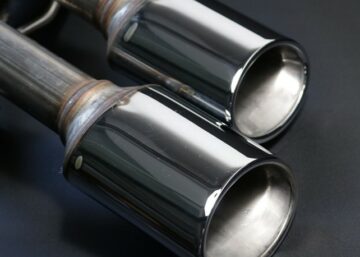There is no doubt that automakers continue to find ways to improve vehicle performance, handling, safety, and efficiency. More so, automotive assembly systems undergo complex changes every year. Software engineers must authenticate every modification in the automobile assembly line or procedure to ensure that the changes are devoid of technical errors.
Hence, the application of custom machining in the automotive industry for manufacturing intricate automotive parts has helped simplify automobile assembling processes. This article provides a comprehensive guide on automotive parts manufacturing and assembling. Without further ado, let’s get right into it.
Overview of Automotive Parts Manufacturing
Today, there are many automotive part options available for vehicle owners, providing quality performance and long-lasting usage. This is due to the recent technological advances applied in the automotive industry. Below are some of the steps involved in automotive parts manufacturing.
1. Selection of Raw Material
Raw materials make up the primary component of any manufacturing process. As such, many automotive part manufacturers examine the properties of raw materials to choose the proper material grade for manufacturing. This includes the physical, chemical, and mechanical features of the suitable material grade, especially plastics and metals. Aside from this, manufacturers also consider other factors like the material’s sustainability, cost-effectiveness, and weight to keep up with consumers’ demands.
2. Design and Engineering
Automotive parts must meet the precise vehicle standards and please the desire of buyers. For this reason, manufacturers draw out apt designs and check and revise them to perfection. Once these designs and engineering specs get approved, then the manufacturing process begins.
 3. Manufacturing
3. Manufacturing
In this step, automotive part manufacturers fabricate automobile components from raw or semi-raw material based on the drafted designs. Moreover, modern manufacturing enterprises use automated machines and large welding systems that combine various processes such as cutting, shaping, blending, and so on to produce desired specialty parts. These innovative machines also allow quick adjustments of their software designs to make different custom parts.
4. Finishing
The finishing procedures come right after manufacturing. Experts use various surface finishes and post-processing options to improve the functionality and aesthetics of the fabricated car parts. More specifically, the post-processing options applied for custom automotive parts include painting, polishing, screening, grinding, bead blasting, electroplating, and powder coating.
Main Systems and Components of an Automobile
Automobiles are very complex machines, comprising many assembled automotive parts and systems. Check the predominant segments of a modern automobile below:
- Chassis and Auto Body (wheels, tires, and brakes)
- Engine and its Parts
- Lubrication System
- Transmission System
- Security System
- Cooling System
- Fuel Supply System
- Front and Rear Axle
- Steering and Suspension System
- Electrical and Air Conditioning System
What is Automotive Assembling?
Automotive assembling refers to the processes whereby individual automotive parts get added in sequence from one workstation to another until the final assembly of the automobile is produced. The concept of assembly lines comprising several stations now applies across the automotive industry to automate the efficient manufacture of standardized products faster. Typically, the structure of the car assembly line involves four stages. They are stamping, body shop, paint, and final assembly.
 Yet, vehicle assembly systems vary from factory to factory in terms of production volumes, the number of variants, performance, and flexibility. Above all, automobile assembly systems that can be easily modified for a different setup or new production remain the ideal assembly system for automotive factories. For instance, the mixed model car assembly line features the ability to assemble diverse models of automobiles.
Yet, vehicle assembly systems vary from factory to factory in terms of production volumes, the number of variants, performance, and flexibility. Above all, automobile assembly systems that can be easily modified for a different setup or new production remain the ideal assembly system for automotive factories. For instance, the mixed model car assembly line features the ability to assemble diverse models of automobiles.
Additionally, most automotive companies use robots to extensively perform some complicated tasks allotted to human autoworkers due to the repetitive procedures involved in automobile assembly lines. As such, these robots provide more flexibility, speed up consistent production, cut down waste, improve worker safety, and reduce the issues associated with human errors during manufacturing.
Challenges for Automotive Assembly Technologies
Several factors such as global sourcing, industry restructuring, and competition pose notable challenges for the automotive industry. Categorically, automotive assembly technologies also face specific complications in vehicle production. Check them below:
1. Mass Customization
Over the years, the automotive industry transitioned from mass production to mass customization. Consequently, automotive assembly technologies cannot cope with this increasing demand and set requirements for customized vehicles using limited materials and resources. Likewise, large production operations constrain the ability of automobile assembly lines to support the production of more vehicle variants.
2. Increased Complexity
Vehicles as products are becoming more complex to fabricate than ever. This increased complexity makes up a great challenge for assembly technologies. Thus, for automotive assembly technologies to efficiently match this rising complexity, automakers need to integrate vehicle assembly systems with higher flexibility potential. On top of this, manufacturing decisions considering specific factors such as the cost and quality of these assembly systems remain essential.
How Can Custom Part Manufacturing Help Car Assembly?
To a large extent, manufacturing precise custom parts for car assembly lines can help manufacturers to fabricate large batches of standardized automobile products at a rapid rate. Likewise, the end products will not have many variations due to the availability of identical custom components. This is crucial because using distorted automotive parts can pose potential dangers or hazards to automobile owners. Moreover, automotive parts that fail to meet required standards or lack quality control can induce expensive recalls.
Nevertheless, custom CNC machining services currently rank among the most dependable machining services in automotive part manufacturing. Check the ways custom CNC machining of automotive parts helps car assembly below:
 ● Precision and Accuracy
● Precision and Accuracy
CNC machines embrace computer technologies that automate the operation of manufacturing tools. As a result, automakers use these machines to fabricate car components that meet the required tolerances. This overall accuracy in automotive part manufacturing operations and end products supports assembling automobile components without obstacles.
● Higher Compatibility with Different Materials
The extensive compatibility of CNC machines with different materials makes them a better selection for fabricating custom automotive parts. Besides, the typical materials for automotive part manufacturing include aluminum, titanium, steel, plastic, copper, etc. Further, the diversity of these car parts creates an array of options automakers can choose from for improved car assembly.
● Functional Testing of Automotive Parts
CNC machining can also rapidly produce automotive prototypes to improve the design and quality of custom car parts. Experts apply this technique to test the functionality and performance of various automotive parts before large-scale production. Thus, this approach eventually lowers production costs and delivers high-quality car components for assembling.
● Verification of Visual Prototypes
Custom CNC machining integrates the design and verification of visual car prototypes. You will discover that these prototypes help automakers to examine and assess the overall appearance, shape, and dimensions of proposed automotive parts. That way, automakers can fabricate precise automobile components well-suited for vehicle assembly systems, thus preventing possible recalls after final production.
Application of Automobile Assembly Systems
Nowadays, automotive companies use automobile assembly systems integrating automated technologies and human-based operations. Therefore, these hybrid vehicle assembly systems have higher flexibility for different automobiles. They include cars, buses, trucks, buses, vans, etc. Automobile assembly systems apply in the following processes:
1. Material Handling
Automakers use automotive assembly systems to handle and transport various materials. They are mainly used for heavy and bulk components such as engine blocks, dashboards, or air tanks.
 2. Joining
2. Joining
Vehicle assembly systems link two or more car components to produce sub-assemblies. The recent invention of the self-drilling and self-piercing rivets further enhances automobile part joining. In addition, most automotive companies adopt the mixed model automobile assembly systems as they help provide high joint strength and quality.
3. Precise Positioning
Automobile assembly technologies comprise fixtures, brackets, and clamping devices for placing car parts in the exact position. Also, they help ensure that the position remains intact throughout the assembling operation.
Below are some automotive assembly systems:
- Engine Performance
- Ignition Monitoring
- Mechanical Testing
- Telematics
- Ultrasonic Inspection
- Vibration Analysis
- Component Testing
- Data Logging
- Anti-lock Braking System
- RADAR Ranging
- Robot Vision
WayKen Offers Automotive Part Manufacturing and Assembly Services for You
Many automakers constantly seek ways to enhance vehicle efficiency, safety, and performance. Thus, automotive part manufacturers must settle on suitable raw materials, designs, manufacturing processes, and finishing techniques to fabricate the desired car part. Car assembly lines also play a vital role in the automotive industry because it makes the automobile assembly and production process more efficient, easier, and faster.
If you want to make custom automotive parts or prototypes for your vehicle, you’ve come to the right place. At WayKen, we provide exceptional automotive part manufacturing and assembly services to create custom automobile parts you need.
From mechanical to control engineering, our expert machinists assure quality, precise, and affordable custom automotive parts. Contact us today for one-on-one support service, and you will get a response within 12 hours.
FAQs
How many parts are in a vehicle?
A typical modern vehicle comprises over 30,000 specialty parts, counting down to the most miniature screws, nuts, and bolts. These automotive parts get manufactured with different raw materials and undergo diverse manufacturing processes to fabricate the desired vehicle.
Which are the major components assemblies of a car?
A car has several automotive components, and the major components include the Chassis, Engine, Transmission System, and Body. The chassis incorporates all the primary assemblies consisting of the clutch, gearbox, propeller shaft, axles, brakes, steering, and suspension system.
How long does automobile assembly take?
Once the manufactured automotive parts get stationed at the final production line, automakers take about 18 to 35 hours to produce a standard market vehicle. But this varies with the car the automobile makers aim to build. Sometimes, a customized vehicle can take roughly 2 to 3 months to make in an automotive factory, from welding to complete engine assembly to painting.




